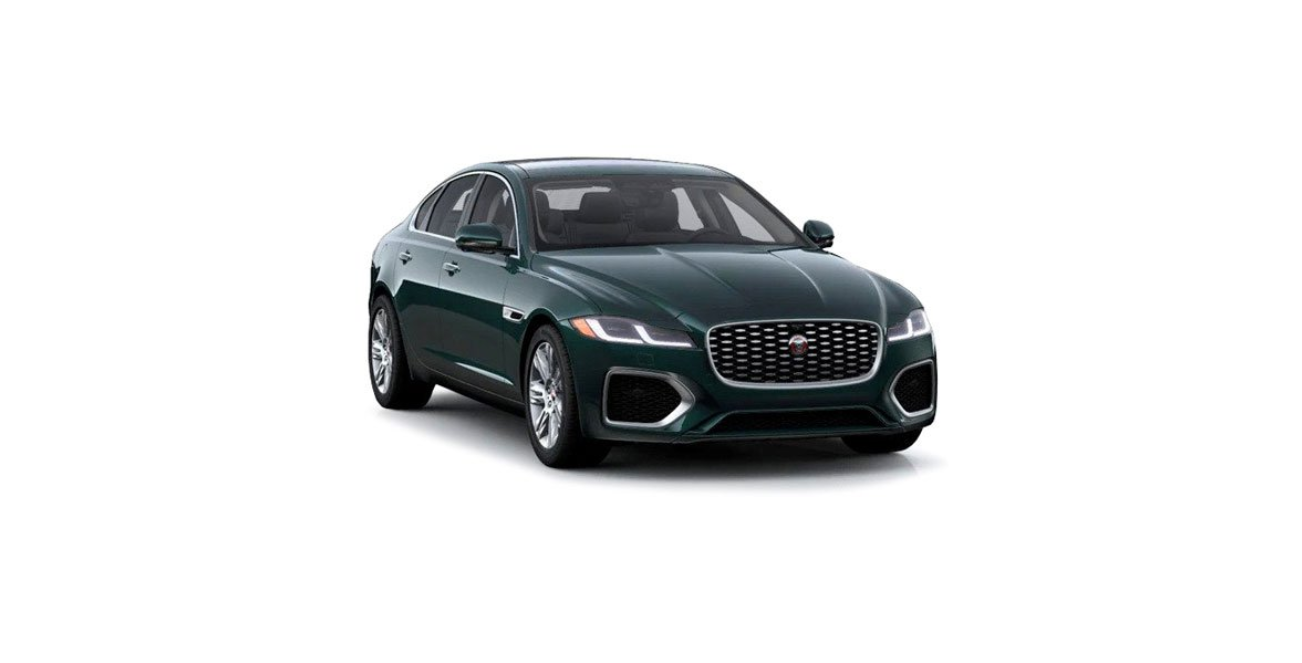2022 Jaguar XF Vehicle Cleaning Owners Manual




2022 Jaguar XF Vehicle Cleaning
THE EXTERIOR
Make sure the following cautions have been read and fully understood before cleaning the vehicle. Failure to do so could result in damage to the vehicle.
Make sure the tail pipe is cool before polishing the tail pipe finishers. Failure to do so may result in personal injury.
To prevent damage to the vehicle when using a detailing service, make sure to advise them of the cleaning instructions contained within the Owner’s Handbook.
Never use cleaning products which are not approved for use on vehicles. Using unapproved cleaning products may cause damage to the vehicle.
To avoid damage to the hood, do not lift the wipers when they are in the normal parked position. See WIPERS SERVICE POSITION.
Following cleaning of the vehicle’s exterior, it is recommended that the vehicle is taken for a short drive, in order to dry out the brakes. A short drive, in order to dry out the brakes, is especially recommended if a pressure washer is used. Wet brakes may impair the vehicle’s ability to safely slow down, which may result in damage to the vehicle.
Some high pressure cleaning systems are sufficiently powerful to penetrate door and window seals, and damage trim and door locks. Never aim the water jet directly at the engine air intake, heater air intakes, radiator cooling fins, body seals, cameras, or at any components which may be damaged.
After washing the vehicle, it is recommended to use a suitable metal polish on stainless steel or chrome finishers to restore the surface appearance.
Do not aim the water jet directly at any rubber gaiters or seals on suspension joints.
Make sure that the water jet nozzle is more than 12 in (300 mm) away from vehicle components.
SENSORS AND CAMERAS
When washing the vehicle, do not aim high pressure water jets directly at any of the sensors and cameras. High pressure water jets may damage the sensors and cameras.
Do not use abrasive materials, or hard or sharp objects, to clean the sensors and cameras. Such objects may cause damage to the vehicle’s sensors and cameras.
Only use approved vehicle shampoo. Using unapproved cleaning products may damage the vehicle.
Keep the parking sensors clean to maintain accuracy and performance.
If required, clean the cameras using a cloth moistened with a small amount of glass-cleaning product.
PAINTWORK
Substances which are corrosive, such as bird droppings, can damage the vehicle’s paintwork and should be removed as soon as possible.
USING AN AUTOMATIC WASH
Commercially operated, automatic car washes, jet washes, and power-operated mops are not recommended. Using such cleaning equipment can cause damage to the vehicle.
ENGINE COMPARTMENT
Do not use a high-pressure washer or steam cleaner in the engine compartment. Using unapproved cleaning equipment can cause damage to certain engine components.
Make sure that the brake fluid reservoir is kept dry at all times. Only use a clean, dry cloth to clean the brake fluid cap and reservoir. Using unapproved cleaning methods can cause damage to the vehicle.
ALLOY WHEELS
Only use appropriate wheel cleaning products for alloy wheels. Using inappropriate cleaning products or failure to follow the manufacturers application guidelines may cause damage to the component or the vehicle.
GLASS SURFACES
Clean the rear window with a soft cloth to avoid damaging the heating element. Do not scrape the glass or use any abrasive cleaning fluid.
Mirror glass is particularly susceptible to damage. Wash with soapy water. Do not use abrasive cleaning compounds or metal scrapers to remove ice.
To avoid damaging the protective coating, only clean the interior side of the sunroof glass with a soft cloth. Do not scrape the glass or use abrasive cleaning fluids.
REAR WINDOW
To avoid damaging the heating elements when cleaning the inside of the rear glass, use only a soft, damp cloth or chamois leather. Do not use solvents or sharp objects to clean the glass.
SUNROOF WIND DEFLECTOR
A mild solution of soap and water, or car shampoo, should be used to clean the wind deflector net periodically. Support the underside of the net with a soft cloth, and gently scrub the net using a soft-bristled brush.
REMOVING GREASE AND TAR
Remove grease or tar with vehicle manufacturer-approved tar remover or methylated spirit (alcohol). White spirit is also effective, but must not be applied to rubber, particularly the windshield wiper blades.
Make sure that after using methylated or white spirit, the area is washed immediately with soapy water, to remove all traces of spirit. Not doing so may cause damage to the vehicle.
POLISHING
Chrome polish, or other abrasive cleaners, must not be used on the vehicle’s brightwork. Such products may cause permanent damage to the brightwork.
It is recommended that the vehicle is polished regularly using the vehicle manufacturer’s polish and a polishing cloth.
THE INTERIOR
Some cleaning products contain substances that are harmful and can cause health problems if used incorrectly.
Some cleaning products may cause damage to the vehicle’s interior. Make sure to read the cleaning product’s instructions carefully. If in any doubt as to which products to use, consult a retailer/authorized repairer.
Do not use chemical agents, solvents, or domestic cleaning products. Using unapproved cleaning products may damage the vehicle.
To prevent damage to the vehicle when using a detailing service, make sure to advise of the cleaning instructions contained within the Owner’s Handbook.
Unless spillages, such as tea, coffee, or ink, are washed away immediately, permanent staining may have to be accepted.
When cleaning, do not allow sharp or abrasive objects to make contact with the components. Sharp or abrasive objects may damage the components.
Use a soft, dry, lint-free cloth when cleaning switches or controls. Do not apply excessive pressure when doing so. Excessive pressure can damage vehicle components.
Do not spray liquids directly onto the surface of switches and controls. Fluids leaking into the gaps around switches and controls can damage the electronics of the vehicle.
Take care when cleaning high gloss surfaces as they are prone to scratching. It is recommended to use a clean micro-fibre cloth in small circular motions, making sure a fresh section of clean cloth is used regularly.
To prevent ingrained dirt and staining, inspect the interior regularly and clean every 1 to 2 months.
It is recommended to vacuum interior surfaces with a soft brush head attachment before using cleaning products.
CLEANING SWITCHES AND CONTROLS
Use a soft, dry, lint-free cloth when cleaning switches or controls. Do not apply excessive pressure when doing so. Excessive pressure could cause a component malfunction or even lead to a complete failure.
Do not spray liquids directly onto the surface of switches and controls. Liquids leaking into the gaps around switches and controls can damage the electronics of the vehicle.
Do not use chemical agents, solvents, or domestic cleaning products. Using unapproved cleaning products may damage the vehicle.
When cleaning, do not allow sharp or abrasive objects to make contact with the components. Sharp or abrasive objects may damage the components.
FABRIC UPHOLSTERY
Never use soap, ammonia, bleach, or other cleaners intended for use on hard surfaces. Using unapproved cleaning products may damage the upholstery fabrics.
Do not use upholstery cleaner on electrical equipment such as dashboard switches. Doing so may damage the electrical equipment.
Some materials and fabrics are prone to dye transfer from colored clothing e.g., jeans, which can cause unsightly discoloration of lighter colored materials and fabrics. Affected areas should be cleaned as soon as possible.
Most stains on fabrics can be removed if treatment is carried out immediately before the stain has a chance to dry in. Specific products for use on interior fabrics are recommended for cleaning fabric upholstery, however, dry cleaning fluid or clean water can also be used.
To clean fabric upholstery:
- Wipe with a clean, soft, lint-free cloth or vacuum up the majority of the debris.
- Follow the instructions for the chosen upholstery cleaning product. Avoid over-wetting.
- If staining persists, agitate the surface with a firm sponge or soft brush containing the chosen cleaning product. Dry the surface by wiping with a clean microfiber cloth.
To avoid watermarks clean the entire section of fabric containing the stain.
LEATHER UPHOLSTERY
Only use cleaning products specifically designed for use on leather. Do not use chemical, alcohol, or abrasive materials, as doing so will cause rapid deterioration of the leather. The use of non-approved products will invalidate the warranty.
If in any doubt as to which products to use, consult a retailer/authorized repairer. Using the wrong product can cause damage to the leather surfaces.
Dark clothing may stain leather seats, just like other upholstery products.
Sharp objects, such as belts, zippers, rivets, etc., can leave permanent scratches and scratch marks on the leather surface.
To prevent ingrained dirt and staining clean the seat upholstery every 1 to 2 months, dealing with stains immediately.
To clean leather upholstery:
- Wipe off fine dust from the seat surfaces using a clean, damp, non-colored cloth or vacuum with soft brush head attachment. Avoid over-wetting the leather.
- If this is not sufficient, use a cloth which has been dampened with warm, soapy water and then wrung out. Use only mild, non-caustic soap. Alternatively, use an interior upholstery wipe.
- Use the vehicle manufacturer’s leather cleaner for heavily soiled areas. Dry off and rub with a clean, soft cloth. Make sure to change the cloth surface regularly.
Use the vehicle manufacturer’s leather cleaner several times a year to maintain the leather’s suppleness and appearance. The cleaner nourishes and moisturizes the leather, and helps to improve the surface’s protective film against dust and substances.
SEAT BELTS
Do not allow any water, cleaning products, or fabric from cloths to enter the seat belt mechanism. Any substance which enters the mechanism may affect the performance of the seat belt in an impact. Damage to the seat belt can greatly reduce its effectiveness in reducing the risk of serious injury or death in the event of an accident.
Extend the seat belts fully. Specific products for use on interior fabrics are recommended, follow the products instructions. Alternatively, use warm water and a non-detergent soap to clean. Allow the seat belts to dry naturally while fully extended.
While cleaning the seat belt, take the opportunity to examine the webbing for damage/wear. Any wear or damage should be reported to, and rectified by a retailer/authorized repairer.
AIRBAG MODULE COVERS
Airbag covers should be cleaned using only a slightly dampened cloth and a small amount of upholstery cleaner. Some cleaning products may cause damage to airbag covers and airbags which can lead to serious injury or death in the event of an accident.
Do not allow the airbag covers, or surrounding areas, to become contaminated with liquids. Any substance which enters the mechanism can prevent correct deployment of an airbag during an impact and may cause serious injury or death.
Recent Posts
VW Jetta Engine Fuse Box Diagram
Access the comprehensive 2010-2018 VW Jetta Passenger Fuse Box Diagram to troubleshoot electrical issues effectively.…
VW Jetta Passenger Fuse Box Diagram
Explore the comprehensive VW Jetta Passenger Fuse Box Diagram to troubleshoot electrical issues effectively. Understand…
2023 Ford F-150 Lightning Fuse Box Diagram
Under Hood Fuse Box Location Remove the front luggage compartment cover. Under Hood Fuse Box…
2022 Kawasaki NINJA H2 SX SE Brake Lever Adjuster Owner’s Manual
2022 Kawasaki NINJA H2 SX SE Brake Lever Adjuster Owner's Manual NOTICE Only adjust the front…
2023 Land Rover Range Rover Evoque Exiting The Vehicle Owners Manual
2023 Land Rover Range Rover Evoque Exiting The Vehicle SINGLE LOCKING WARNING Before exiting the…
2023 Land Rover Range Rover Evoque Front Seats Owners Manual
2023 Land Rover Range Rover Evoque Front Seats FRONT SEAT SAFETY Make sure to read…
